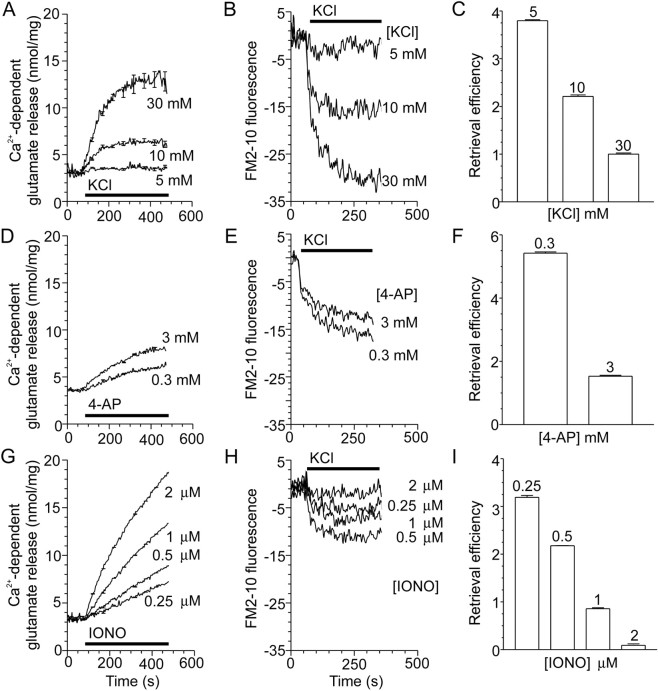Fig. 1.
Endocytosis is inversely proportional to exocytosis with increasing stimulation. A,D, G, Ca2+-dependent glutamate release from nerve terminals was stimulated with increasing concentrations of KCl (A), 4-AP (D), or ionomycin (IONO;G) as indicated. The period of stimulation is indicated by the bar; n = 3–7 (±SEM).B, E, H, Nerve terminals were loaded for 2 min with FM2–10 during S1 stimulation, using increasing concentrations of KCl (B), 4-AP (E), or ionomycin (H) in plus Ca2+medium, with minus Ca2+ medium (1 mmEGTA) serving as a control. A representative trace of the subsequent release of loaded FM2–10 (S2) by a standard stimulus of 30 mm KCl is displayed. All traces are corrected for background uptake by subtracting the minus Ca2+ trace. Exocytosis is constant during the S2 stimulation; therefore, endocytosis is calculated as the evoked Ca2+-dependent decrease in absolute fluorescence units. The period of KCl (30 mm) stimulation is indicated by the bar; n = 4–5.C, F, I, Retrieval efficiency (endocytosis/exocytosis, normalized to 1.0 for 30 mm KCl) for increasing concentrations of KCl (C), 4-AP (F), or ionomycin (I). Endocytosis is defined as above, and exocytosis is Ca2+-dependent glutamate release after 2 min; n = 3–7 (±SEM).

